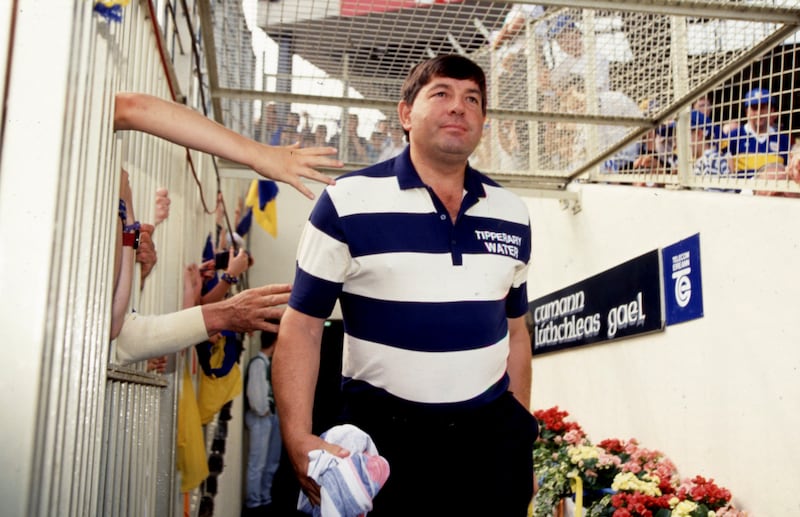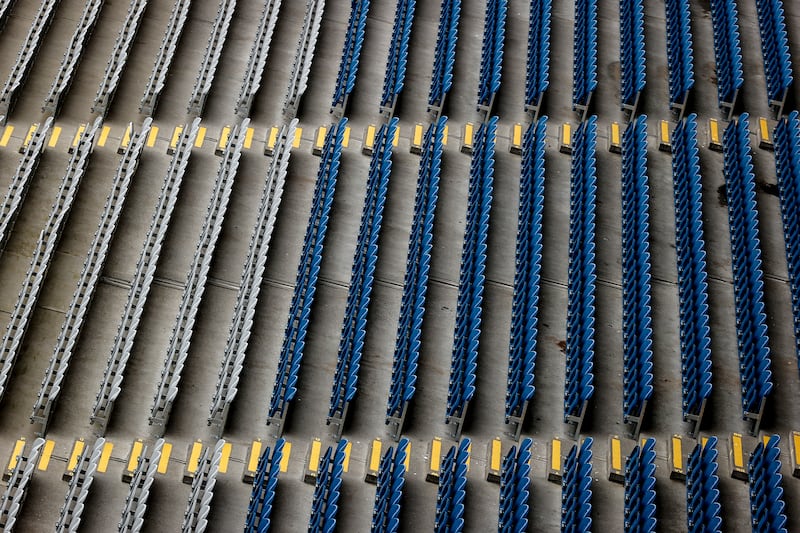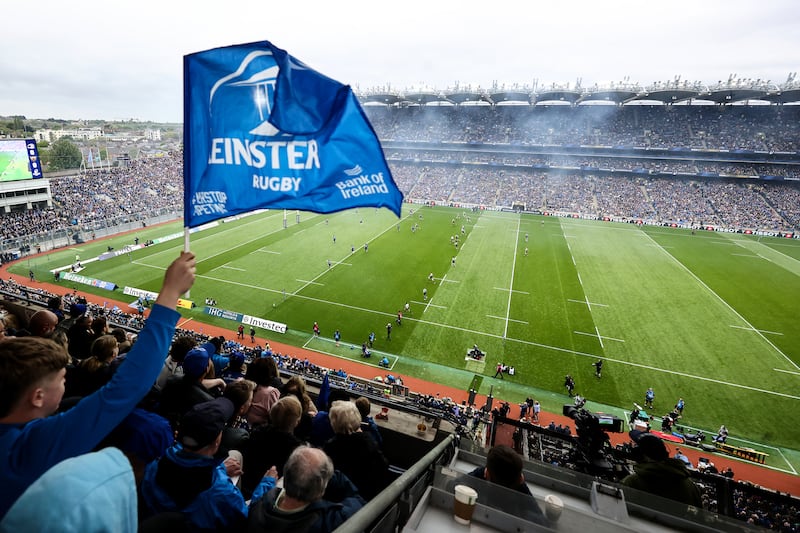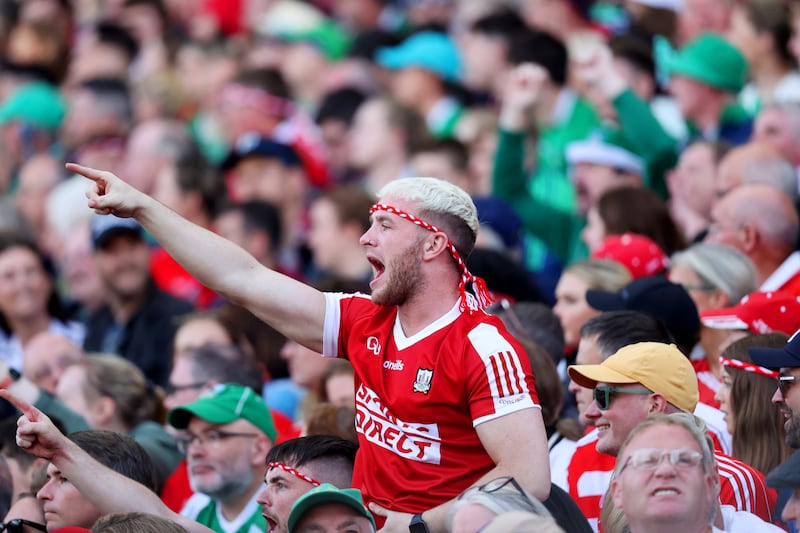In Tim Carey’s beautiful book ‘Croke Park – A History’, Páidí Ó Sé tells a story about the first time he set foot on the hallowed turf. He travelled to the 1972 All-Ireland final with Pat Spillane, both of them boarders in St Brendan’s College in Killarney. Instead of returning home as planned that night, though, they found accommodation near Jones’ Road and went on the town.
At the end of the evening, they were walking back to their digs when they noticed a gate was open in Croke Park. In they flew. “It felt great running up and down but we had no ball to kick,” he said. “Before long though we imagined we had an O’Neills ball. Pat went into the left corner forward position, and I kicked a great ball into him. He fielded the imaginary ball well, turned on the spot and shot over the bar.
“I fielded the kick-out in the moonlight and this time placed the ball wide of Pat on the outside. I kept yelling at him as he went like hell after the ball and scored again. It was mighty fun until we stopped and headed for the bed, wondering would we be expelled from Brendan’s when we got home some time on Monday.”
It is the kind of magic realism that WP Kinsella wrought in ‘Shoeless Joe’, his 1982 novel that was later adapted into the movie ‘Field of Dreams’. The difference for Ó Sé and Spillane was that three years later they would be back in Croke Park as All-Ireland winners. The imaginary ball was passed to us.
READ MORE

On All-Ireland weekends, Croke Park moves into an altered state. It is not just a venue, and a vantage point, and a volcano of sound, and a dream factory and an abattoir for dreams, it is a player too: part of the dramatis personae. There are Croke Park teams and Croke Park players and there is Croke Park pressure. And even if some of that is fiction and all of it is abstract, people say it out loud and people believe it.
Babs Keating always used to say that it was impossible to play “against the crowd” in the last 10 minutes of an All-Ireland final, and you can imagine how that could be true. In the All-Ireland semi-finals Kerry swam against the current of Armagh noise and Limerick were buffeted by the Cork noise and though there is no way of quantifying the energy there is no sense in denying it.
But there is a moody, seasonality to Croke Park too. It is only a couple of months since punters and commentators were imploring the Leinster Council to quit the place. Dublin and Meath – one of football’s heritage rivalries that has fallen on hard times – attracted a miserable crowd of 21,455 for a Leinster quarter-final. A fortnight later a semi-final double header involving Dublin, Offaly, Louth and Kildare brought fewer than 22,000 fans through the gates.
The Leinster football championship is in a dishevelled state and playing those games in Croke Park felt like slapping lipstick on a pig.

Camogie’s national league finals have taken up residence in Croke Park over the last five years, presumably with the intention of raising its status. But the crowds have been extremely small and in a stadium as vast as Croke Park it is impossible to draw a veil over the emptiness.
The crowds for the Leinster football games, and for the camogie league finals would have generated an atmosphere somewhere else, but Croke Park has the quality of a Thermos flask: cold stays cold, hot stays hot.
The argument in those cases is that it is about the players, not the crowds. Croke Park is still a dream destination. The All-Ireland junior and intermediate club finals are an early season fixture on Croke Park’s schedule now and on those days the crowds are tiny and the atmosphere is feverish. Those finals would feel much less significant if they were played somewhere else. The vast majority of those players would have no other chance to play in Croke Park. It is a boast for life.
Anyway, how often is it full? For GAA matches, three times this year: yesterday, next Sunday and for the Cork-Limerick All-Ireland semi-final a fortnight ago. For concerts? Six times: Bruce Springsteen, AC/DC and Coldplay x 4. For rugby? Once: Leinster v Northampton.

By next Sunday 400,000 people will have attended GAA matches in Croke Park in the month of July, a staggering number. But Garth Brooks managed that in five nights. That is the nature of Croke Park now: a thriving commercial enterprise, open for business. A cathedral and a dance hall, depending on the booking.
It is 20 years since the transformative redevelopment of the stadium was completed, and for a few years afterwards the crowds were swollen by elements of tourism and freshness and excited curiosity. The football qualifiers were still in their infancy and teams who had spent generations locked out of Croke Park were turning up there now in a more fluid fixture list.
The Ulster final decamped to Croke Park for three years between 2004 and 2006 because Ulster football was in the grip of a boom and Clones couldn’t accommodate the crowds. One of those finals brought 60,000 to Croke Park, but that crowd wasn’t all about the football: the new Croke Park was glamorous. Over time, that lustre was bound to fade.

Unlike every other iteration of the ground in its history, the 21st century Croke Park is comfortable. Standards were set. A €14 million refurbishment of the Cusack Stand was completed this year; 40,000 of the most weather-beaten seats were swapped out in the spring and early summer. It is fit for every purpose.
But for All Irelands it changes: it glows and shakes and drags your heart into your mouth.
“As the men [captains] clasped hands fully 7,000 spectators were on the grounds,” wrote the Gaelic News in its report of the 1897 All-Ireland football final on Jones’ Road. “The last buzz of excitement dwindled down until each one held his breath. In goes the leather, and the spectators, giving vent to their pent-up feelings, a roar awoke the surrounding echoes, which never ceased throughout the hour.”
Timeless.

















